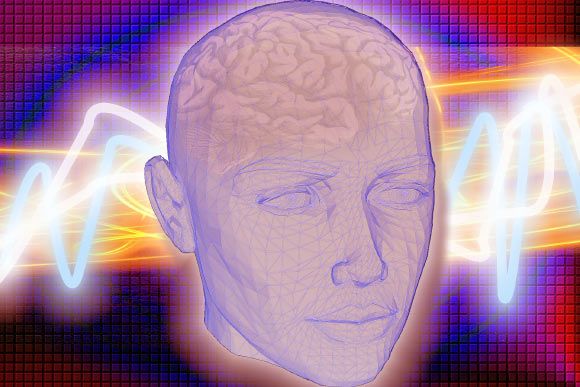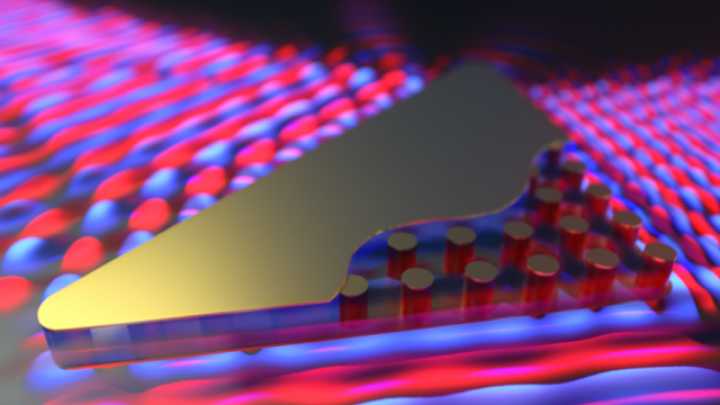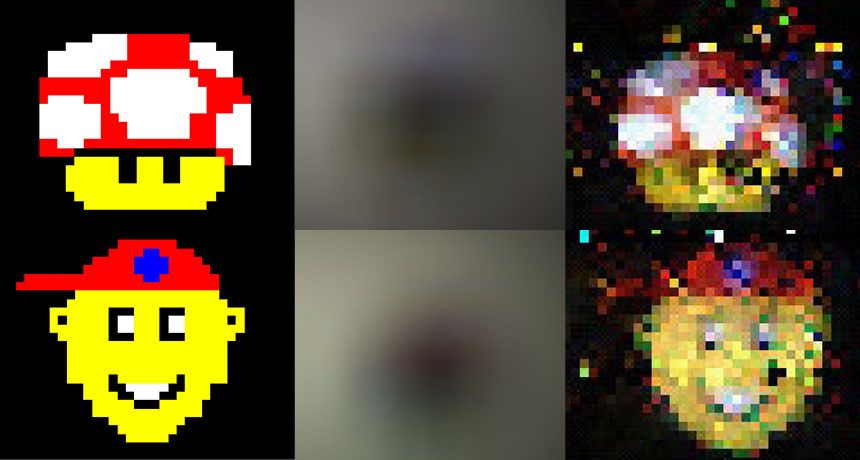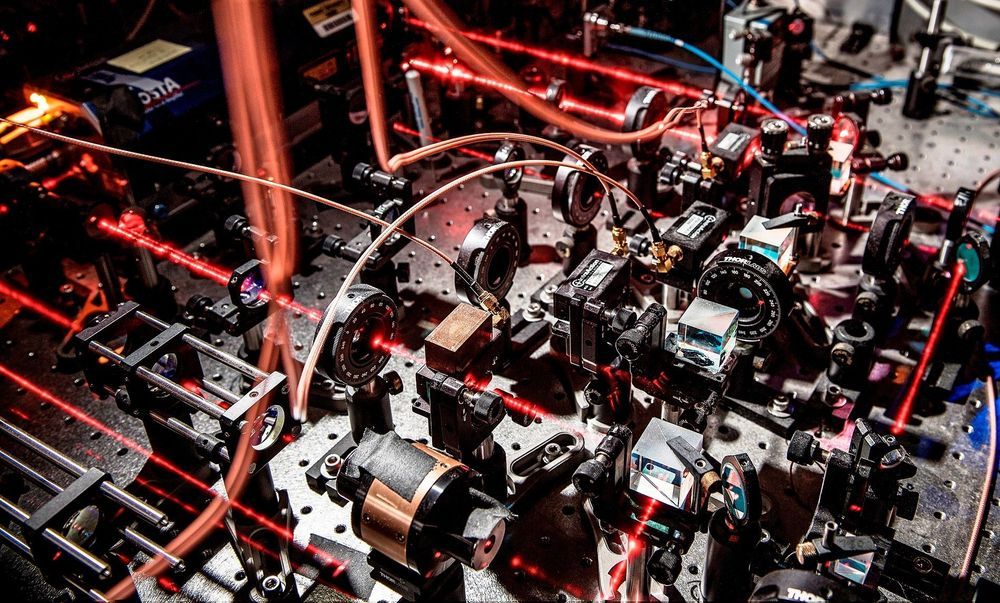Archive for the ‘computing’ category: Page 609
Feb 1, 2019
Scientists ‘hijack’ open-access quantum computer to tease out quantum secrets
Posted by Genevieve Klien in categories: computing, particle physics, quantum physics
The rules of quantum mechanics describe how atoms and molecules act very differently from the world around us. Scientists have made progress toward teasing out these rules—essential for finding ways to make new molecules and better technology—but some are so complex that they evade experimental verification.
With the advent of open-access quantum computers, scientists at the University of Chicago saw an opportunity to do a very unusual experiment to test some of these quantum principles. Their study, which appeared Jan. 31 in Nature Communications Physics, essentially hijacks a quantum computer to discover fundamental truths about the quantum behavior of electrons in molecules.
“Quantum computing is a really exciting realm to explore fundamental questions. It allows us to observe aspects of quantum theory that are absolutely untouchable with classical computers,” said Prof. David Mazziotti, professor of chemistry and author on the paper.
Continue reading “Scientists ‘hijack’ open-access quantum computer to tease out quantum secrets” »
Feb 1, 2019
Black hole plasma jets shine like cosmic lighthouses in these gorgeous images
Posted by Genevieve Klien in categories: computing, cosmology, particle physics
Stunning new images show how black holes produce tremendously bright jets millions of light-years long that can be seen across vast cosmic distances. The images were produced by a computer simulation and could help resolve an enduring mystery about how the jets form, the researchers behind the images said.
Despite their moniker, black holes aren’t always black. As a black hole consumes an object, gas and dust spins around the maw of the gravitational behemoth, and friction can heat the material on the edges to searing temperatures. This violent process creates lighthouse-like beams of charged particles that travel outward at near light speed, emitting radiation that can shine brighter than an entire galaxy. [11 Fascinating Facts About Our Milky Way Galaxy]
“They are like laser beams piercing the universe and allowing us to see black holes whose emission would otherwise be too dim to be detectable,” Alexander Tchekhovskoy, a computational astrophysicist at Northwestern University in Evanston, Illinois, told Live Science.
Continue reading “Black hole plasma jets shine like cosmic lighthouses in these gorgeous images” »
Feb 1, 2019
What’s Better Than 40 GPU-based Computers? A Computer With 40 GPUs
Posted by James Christian Smith in categories: computing, engineering
At the IEEE International Symposium on High-Performance Computer Architecture in February, Illinois computer engineering associate professor Rakesh Kumar and his collaborators will make the case for a wafer-scale computer consisting of as many as 40 GPUs. Simulations of this multiprocessor monster sped calculations nearly 19-fold and cut the combination of energy consumption and signal delay more than 140-fold.
Engineers aim to use “silicon interconnect fabric” to build a computer with 40 GPUs on a single silicon wafer.
Jan 30, 2019
Experimental Brain-Computer Interface Translates Brain Signals into Recognizable Speech
Posted by Paul Battista in categories: computing, neuroscience
A team of researchers at Columbia University has developed a speech brain-computer interface system that translates brain signals into intelligible, recognizable speech. By monitoring someone’s brain activity, the system can reconstruct the words a person hears with unprecedented clarity. The breakthrough, reported in the journal Scientific Reports, could lead to new ways for computers to communicate directly with the brain, and lays the groundwork for helping people who cannot speak.
Jan 30, 2019
All-in-one transparent transistors
Posted by Quinn Sena in categories: computing, solar power, sustainability
Small tweaks in component ratios generate electronically different layers from the same material to create transparent transistors.
Worldwide demand is growing for transparent conducting oxides for use in solar cells, flat panel displays, smart windows and semiconductor-based consumer electronics. KAUST researchers have engineered a zinc-oxide-based transparent material that displays tunable electronic properties depending on the tweaking of a new type of dopant.
Transparent electronics rely on indium tin oxide, a transparent and electrically conductive material that has an exorbitant cost due to the scarcity of indium. Zinc-oxide-based materials, such as hafnium-doped zinc-oxide materials, are expected to offer affordable, green and abundant alternatives to indium tin oxide. However, hafnium-doped zinc-oxide materials typically require high deposition temperatures and display inadequate performance for real-life device applications.
Jan 30, 2019
New Metamaterial Transmits Light With No Energy Loss
Posted by Quinn Sena in categories: computing, mobile phones, space
Very soon we might be able to say good riddance to the overheating laptops, phones and tablets that we deal with every day. Electrons carry information around circuits but lose energy as heat during transmission. Electrons are the best thing we have right now for computing, but in the near future we could wave goodbye to electronics and welcome photon, or light, communication that will be both faster and cooler. There are still few hurdles before we can get this technology in every home and every pocket, but one of its limitations was just solved by the development of a new metamaterial.
A metamaterial is a substance that has properties not observed in nature. In this case, the special property is its refractive index, a value that describes how light propagates through a medium. Take water or glass, for example, which cause light rays to bend as they travel through them. This is why pools always look shallower than they actually are.
The new metamaterial has a refractive index of zero, which means that the light phase in the material can travel infinitely fast. This doesn’t mean that relativity is violated by this material, though. Light has a “group velocity,” the velocity at which the wave propagates into space, and a “phase velocity,” the velocity at which the peaks of the waves move with respect to the wave.
Continue reading “New Metamaterial Transmits Light With No Energy Loss” »
Jan 30, 2019
UNM database of deceased people a national first
Posted by Paul Battista in categories: biotech/medical, computing
People die. All the time. From many causes, including old age, disease, accidents, murder. But researchers can learn from these deaths.
Heather Edgar, forensic anthropologist at The University of New Mexico Office of Medical Investigator (OMI) and associate professor of anthropology, is currently converting a dataset of whole body decedent CT scans into a searchable database that will be available to researchers.
The database will be stored on systems at the UNM Center for Advanced Research Computing, with the help of CARC network and storage specialist Hussein Al-Azzawi. It is being funded by a $702,000 grant from the National Institute of Justice.
Continue reading “UNM database of deceased people a national first” »
Jan 29, 2019
Ordinary cameras can now photograph out-of-sight objects
Posted by Saúl Morales Rodriguéz in categories: computing, electronics
Thanks to a new photo-analyzing computer program, a photographer’s line of sight no longer has to be a straight shot.
Jan 29, 2019
New quantum system could help design better spintronics
Posted by Genevieve Klien in categories: computing, particle physics, quantum physics
Researchers have created a new testing ground for quantum systems in which they can literally turn certain particle interactions on and off, potentially paving the way for advances in spintronics.
Spin transport electronics have the potential to revolutionize electronic devices as we know them, especially when it comes to computing. While standard electronics use an electron’s charge to encode information, spintronic devices rely on another intrinsic property of the electron: its spin.
Spintronics could be faster and more reliable than conventional electronics, as spin can be changed quickly and these devices use less power. However, the field is young and there are many questions researchers need to solve to improve their control of spin information. One of the most complex questions plaguing the field is how the signal carried by particles with spin, known as spin current, decays over time.

















